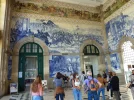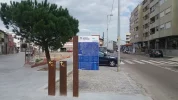Vacajoe
Traded in my work boots for hiking ones
- Time of past OR future Camino
- Frances, Portuguese, Aragon, Norte, SJWayUK, Nive
Simple question: why does the first day’s route on the Central Way from Porto follow a busy thoroughfare versus a less-busy route from village to village, passing by churches and town squares? The current way-marked route skirts a number of villages where you can see the church towers and hear the bells, preventing the modern pilgrim access to the shade, water, and spiritual visits found on the CF routing.
Given that this is a fairly modern iteration of the Way (the “real” one ran towards Braga), I am really curious as to how this route was selected. Anyone?
Given that this is a fairly modern iteration of the Way (the “real” one ran towards Braga), I am really curious as to how this route was selected. Anyone?




















